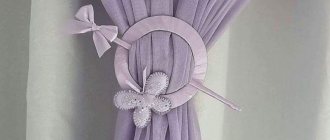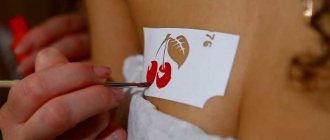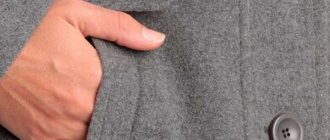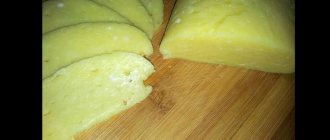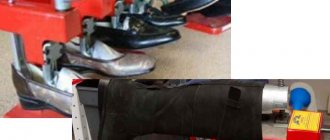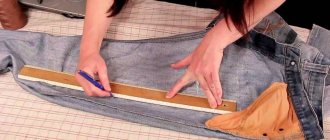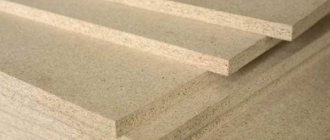An exclusive item can make you stand out from the crowd and make you the object of admiring glances. You don’t have to pay exorbitant sums for individuality. To become the owner of unique jeans, you can decorate any model you like yourself.
Today we will learn how to make ripped jeans at home, which will not be inferior in their sophistication to a pair from the most famous brand.
We outline a work plan
First, let's decide on the number of holes and their location. Equally important will be the size of each hole, as well as its type.
It could be:
- through hole - a piece of arbitrarily shaped fabric simply cut from jeans;
- a hole is not such an obvious hole; horizontal threads remain in the hole, which play the role of “filler” of the hole;
- fraying is a frayed area framed by small fringe, which is not essentially a hole; such jeans can be worn comfortably even in windy weather.
Types of fashionable slits on jeans
- Noodles - several frequent cross cuts;
- One or more large incisions;
- Shaped cut;
- Small holes , single or many at once.
The slots can be of one type or in combination. Before you begin, first consider the design and shape of the cuts. Do not forget that with wear and washing, the size of the holes and abrasions will increase. Don't make them too big or too close together, otherwise you risk getting one big shapeless hole.
Editor's choice: Black trousers: what to wear with and how to choose according to your body shape?
Before starting work, try on the jeans and mark the places of future cuts with a pencil or a dry piece of soap. If your figure is far from ideal, do not make slits in problem areas. Limit yourself to a few small holes in the knee area. Remember that any decor, including slits and fringe, focuses attention on this part of the body.
For slots, the rule of horizontals and verticals works. Thus, vertical holes along the axial threads will visually elongate the legs, and horizontal slits and “noodles” will widen them. Therefore, make such cuts only if you have a slim figure.
Vertical cuts can be made covered with uncut transverse threads. To do this, you need to pull out several longitudinal threads through the slits at the top and bottom. The result will be a fringe effect. Such holes look very modest, since they do not reveal too much of the body, and at the same time impressive.
Which jeans should you choose?
There is an opinion that making holes in jeans is a great way to give new life to an old or boring item. Bored - yes, but if your jeans are frankly worn (elongated knees, faded denim), then artificially created holes are unlikely to save them.
On the contrary, the item will look as if it is long overdue for the trash bin. After all, we are creating an exclusive wardrobe item, and not trying to save a “dying” couple.
It is best to buy new jeans by choosing their size, choosing the model and color you like.
But you can practice on old jeans that are ready to be thrown away, because creating decorative holes is not such a simple matter, and you may not succeed the first time. Please note that if you choose holes to decorate your jeans, then they should not have rhinestones, appliqués or embroideries.
Also, for creative tatters, jeans in traditional shades are recommended - colored options are not suitable.
How to tear jeans beautifully with your own hands: execution techniques
- Sloppy holes in grunge style. Very easy to do. In the selected location, strips of different lengths are cut parallel to each other at a distance of 5 mm. The transverse threads are pulled out and removed. If some of the grain threads are damaged, this will add sophistication to the trousers, but in no case will ruin them.
- Ripped jeans in a minimalist style. For such trousers you will have to mark several places with small holes. The main task is not to damage the transverse threads, but to remove some of the side threads so that they do not stick out very colorfully. Such holes are often made in the size of 2 cm by 4 cm and are placed closer to the side seams of the jeans.
- Frayed holes on trousers are used very often, especially when it comes to large hole diameters. This effect can be easily achieved using a simple kitchen grater, sandpaper or pumice stone for feet. The main thing in this matter is not to touch the threads that remain transverse or lobar, so that the jeans last for more than one month, a year, and the fringe does not tear after the first wash.
Cutting cuts on old jeans step by step video
To correctly make holes in jeans and not be disappointed with the result, try doing the same on a small piece of similar fabric. For example, if you have some jeans scrap left, it will be useful for a test version. Try to make a hole on it with threads, different types of abrasions, styles. To consolidate your knowledge, watch the following video:
How to make holes in jeans
How to make a scuff using a grater
Ordinary kitchen utensils often come to the rescue in handicrafts. To make a hole in your jeans look old and worn, you will need a simple grater or a piece of sandpaper. Draw tightly along the edge of the hole with small jerks with the selected tool so that the threads fluff up. Carry out similar actions with each edge of the denim hole. You can do the work both from the front side and from the back. After this, additionally bleach the threads with a chlorinated solution.
Please note that the back of jeans often looks more original than the front side. If you have extra pieces of this fabric, try making a patch like this on the front of your trousers. You can sew the patch with large stitches so that the threads are visible. Such an addition would be quite appropriate for both men’s and women’s clothing. You can create a pattern from pieces of other fabric (optional). Improve your jeans so that they can complement both a romantic, feminine look and a sporty, daring one.
- ACC - instructions for use for coughs in children and adults
- Salad Herring under a fur coat: recipes with photos
- Jellied meat in a slow cooker - recipes with photos. How to cook jellied chicken, beef and pork in a slow cooker
How to make ripped jeans
Bleached holes
To make your denim look even more stylish, try bleaching some threads and areas. The easiest way to do this is with a chlorinated solution or other bleach. Dissolve ordinary chlorine in a small amount of water, apply the solution to a small piece of cotton wool or gauze and treat the necessary areas with holes. Chlorine eats into the fabric, and whiteness may not appear immediately, but after some time. Therefore, after treatment, wash your jeans immediately, this way the excess chemical will be removed and the holes will remain in excellent shape for a long time.
When bleaching holes in jeans, it is important to carry out all work with rubber gloves and in the open air. It is advisable to test bleaching on a small piece of the same fabric or on an invisible part of the trousers (under the knees, on the wrong side). If you want to decorate your jeans with white drops, then use a pipette to apply a chlorine solution to the fabric, and place a layer of cotton wool underneath. Once the chlorine is absorbed, it needs to interact with the fabric for about 1 hour, after which the clothing will need to be washed completely.
How to wear different holes on jeans?
Jeans with holes through them are the boldest option and often look like you needed a piece of fabric to patch something else.
It is best to combine updated jeans with this item. Sew a cut-out piece of denim onto a textile bag or jacket to create a full-fledged suit.
Jeans with rips look the most familiar; they are combined with grunge-style items, pumps and translucent blouses. These jeans are perfect for creating a casual look.
The rips maintain the visible integrity of the jeans, while flirtatiously exposing areas of skin. You can complement the hole with a piece of lace or colored fabric, sewn from the inside out - the jeans will sparkle in a new way.
Distressed jeans can easily replace regular jeans. They can be combined with a variety of things and shoes, but the amount of decor on the remaining elements of the look should be minimal. In a sense, abrasions resemble stains randomly scattered across the fabric of trousers, so it is better to choose a plain top.
Useful tips
- Having made the cut, you need to “dishevel” its edges a little. To do this, pull out several transverse threads.
- The slits will look more natural if the edges are slightly whitened. Pour bleach on them for 10 minutes and then wash them.
- It is better to wash your jeans by hand after the experiment. Firstly, this will prevent you from damaging your washing machine with chlorine bleach. And secondly, when hand washed, the edges of the slits will additionally fray and take on a natural shape.
Editor's Choice: Women's Plaid Shirts 2021
Making holes - option 1
Having decided on the location of the future hole, take a utility knife and make two parallel horizontal cuts. To avoid damaging the fabric on the opposite side of the leg, place a piece of plywood under the work area.
Having examined the fibers of the fabric, you will see that parallel to the cuts there are white threads - we will leave them, and perpendicular to them - blue (or another color - the color of the jeans you have chosen), they need to be carefully pulled out with nail scissors.
To ensure that the hole retains its aesthetic appearance, cover it from the inside with non-woven material and sew the edges. This way you can create holes of any size and shape. Several horizontally elongated holes, located one under the other, look interesting; they can even be made along the entire length of both legs.
Method No. 5
Neat holes can be made step by step according to these instructions.
- Create horizontal cuts of the same length. A sharp utility knife is best suited for this purpose.
- Armed with nail scissors or a darning needle, pull out the white threads so that they become visible.
- Dark threads that are perpendicular to light ones can be easily pulled out with tweezers.
We tear beautifully - option 2
We mark the area of the future hole and make several horizontal slits with a stationery knife at intervals of no more than 1 cm. Next, use the tip of nail scissors to separate the white threads, working carefully so as not to tear them.
All that remains is to use a stationery knife to scrape off the small scraps of blue vertical threads - this is done quite easily. Upon completion of work, clean the hole and the entire surrounding area with a vacuum cleaner.
Application of the grunge method
Torn pants, which are decorated using this technology, are suitable for both women and men. The process of creating them is quite simple. The main thing is that everything you need is at hand. The following will be useful at work:
- plywood;
- stationery knife;
- pumice;
- scissors.
To tear your jeans, you need to follow these simple instructions:
- The plywood is fixed inside the trouser leg in the place where the specific decor will be made.
- 6-9 holes are made along the transverse threads. Their length should be about half of the trouser leg. It is best to use a stationery knife. It allows you to give the fabric a special carelessness. In this case, the slots can be made of different lengths.
- Then the holes are gently rubbed with your hands and just a few blue threads are pulled out.
- The bottom of the legs is processed. In this case, the edge is cut off, and the resulting edge is processed using pumice. Such actions are performed until the bottom becomes disheveled.
- Incisions in the belt and pocket areas are processed using the same principle.
Now you can try on the torn jeans and evaluate the results obtained.
Creating abrasions
Back in the 80s, scuffs on jeans were made with a piece of ordinary building brick. We will take more sophisticated tools - a fine kitchen grater or pedicure grater, pumice stone, sandpaper.
First, use a grater to carefully create abrasions, then use a pumice stone to make this area “fluffy” and natural. Sandpaper will help to slightly age the item. It is better to carry out such manipulations with a damp cloth - otherwise there will be a lot of textile dust.
Interesting experiment
The location of the future hole can be pre-whitened, then the hole will become a real decorative element and will not create the feeling that the jeans were accidentally damaged. Moisten the designated area of fabric with bleach or bleach solution and leave for several hours, then wash and start creating a hole.
But you need to wash jeans with ready-made holes carefully - by hand or using a special mesh bag for delicate washing. With intensive washing, the tear will turn into an unplanned hole, and the item itself will become unusable.
It is better to bleach holes on jeans in yellow-swamp shades or gray-blue versions. Deep blue jeans are not suitable for this.
Follow our advice and boldly decide to create unusual wardrobe items in the form of ripped jeans. After all, sometimes it’s so difficult to stand out from the boring crowd without looking wild and tasteless.
How to make distressed jeans at home
Even in our very relaxed times, not every person will decide to wear things “decorated” with holes, even if this is not the result of extreme wear and tear of the item, but an original designer find. What should those who don’t want to lag behind fashion do?
You can make small abrasions on your jeans yourself. This looks much more impressive than uniformly colored pants. So, how to make fashionable trousers with scuffs with your own hands?
To do this, you will need to prepare the following materials for work:
- jeans;
- chalk and a dried piece of soap;
- a piece of sandpaper (you can use a pumice stone or a “grater” to sand your feet);
- thick cardboard or a block of wood.
Once everything is ready, you can start working. Some people recommend boiling jeans before creating rips or holes to lighten them slightly (and by adding bleach to achieve a very light shade), and also to make the fabric fibers softer and more pliable, but this is not a prerequisite.
Jeans can be boiled beforehand to lighten them slightly and also to make the fabric fibers more pliable.
So, let's start creating a fashionable thing with our own hands. You need to do the following:
- Put on your jeans and use chalk or dry soap to mark the areas of future abrasions.
- Lay the trousers on a flat surface and place a cardboard or block inside the trouser leg. This is necessary so that when creating abrasion, for example, on the front half of the trouser leg, you do not damage the back half.
- Take a sheet of sandpaper, a pumice stone, or a heel cleaner (some people use sharpening stones for sharpening knives) and use even, gentle movements to work on the desired areas of the fabric.
You can create abrasions of different “depths”. Some people prefer a slightly worn surface, while others prefer severe abrasions, when the white horizontal threads of the fabric's warp are visible. It all depends on your desire and taste.


